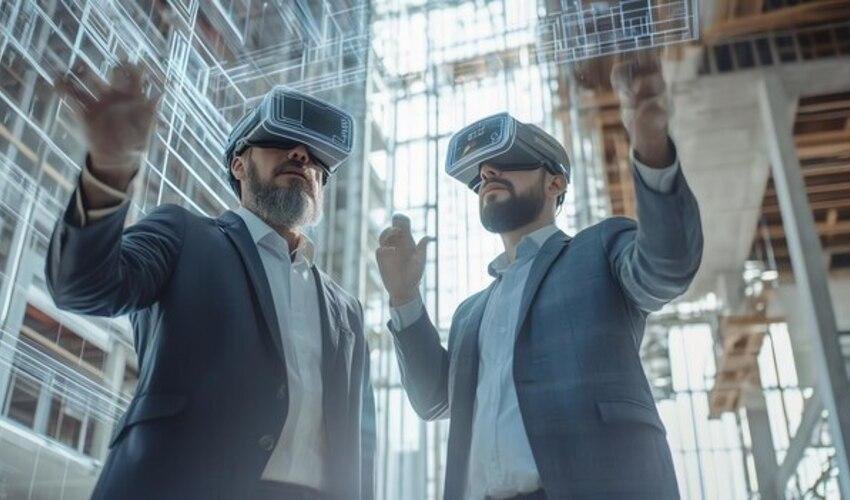Augmented Reality (AR) is changing industries worldwide. One of the most exciting areas of growth is construction. Augmented Reality in Construction is transforming how professionals plan, design, and execute projects. This technology helps visualize complex designs, improve accuracy, and boost efficiency. Let’s explore how AR is revolutionizing the construction industry.
What is Augmented Reality in Construction?
Augmented Reality overlays digital information onto the real world. In construction, AR helps visualize structures before they are built. Workers can see 3D models on-site, reducing errors and enhancing understanding. This technology bridges the gap between abstract blueprints and real-world projects.
Key Benefits of Augmented Reality in Construction
-
Enhanced Design Visualization
-
AR allows architects to present 3D models instead of 2D drawings.
-
Clients can see the final structure before construction begins.
-
-
Improved Accuracy and Precision
-
AR reduces measurement errors by overlaying digital designs onto physical spaces.
-
Builders can follow exact guidelines, ensuring fewer mistakes.
-
-
Better Collaboration
-
AR makes it easier for teams to communicate complex ideas.
-
Multiple teams can view and discuss the same model in real time.
-
-
Increased Safety on Construction Sites
-
AR can highlight potential hazards.
-
Workers can receive safety instructions through AR devices.
-
-
Faster Project Completion
-
AR tools help streamline project planning.
-
Teams work more efficiently, reducing delays.
-
Applications of Augmented Reality in Construction
-
Design and Planning
-
AR helps architects and engineers create virtual models.
-
These models allow better planning and problem-solving before construction starts.
-
-
On-Site Assistance
-
AR devices guide workers with visual instructions.
-
Workers can see where to place materials without checking paper plans.
-
-
Training and Education
-
AR provides interactive training for new workers.
-
Simulations help workers practice tasks in a risk-free environment.
-
-
Client Presentations and Approvals
-
AR makes client presentations more engaging.
-
Clients can walk through virtual spaces and request changes easily.
-
Tools and Technologies Driving AR in Construction
Several tools make AR possible in construction:
-
AR Software: Programs like Autodesk and BIM 360 support AR modeling.
-
AR Hardware: Devices like Microsoft HoloLens and AR headsets display virtual models.
-
Mobile Apps: AR apps allow site managers to access models on smartphones or tablets.
Challenges in Implementing AR in Construction
Despite its benefits, AR adoption faces some challenges:
-
High Initial Costs
-
AR equipment and software require significant investment.
-
-
Technical Training
-
Workers need training to use AR tools effectively.
-
-
Data Integration Issues
-
AR systems must integrate with existing software and workflows.
-
-
Limited Internet Connectivity
-
AR applications often need strong, stable connections.
-
The Future of Augmented Reality in Construction
The future looks bright for AR in construction. As technology advances, AR tools will become more affordable and accessible. Future innovations may include:
-
Improved AR Headsets: Lighter, more comfortable, and with better visuals.
-
AI Integration: Smart AR systems that predict project issues before they occur.
-
Cloud-Based Collaboration: Real-time updates accessible from anywhere.
Conclusion
Augmented Reality in Construction is more than a trend; it is a transformative tool for the industry. AR improves design accuracy, boosts collaboration, and enhances safety. This way, construction projects run smoothly. Technology keeps evolving. This means construction pros will see even bigger advancements in how they design, build, and manage projects.
Read Dive is a leading technology blog focusing on different domains like Blockchain, AI, Chatbot, Fintech, Health Tech, Software Development and Testing. For guest blogging, please feel free to contact at readdive@gmail.com.





